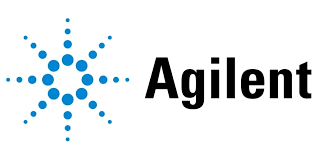Ai In Tv
Published Date: 02 June 2025 | Report Code: ai-in-tv
Ai In Tv Market Size, Share, Industry Trends and Forecast to 2033
This comprehensive report offers an in-depth analysis of the AI in TV market from 2024 to 2033, discussing current market conditions, growth projections, technological advancements, segmentation details, regional performance and leading competitors. The report provides valuable insights for stakeholders looking to understand shifting trends and future market dynamics, supported by statistical data and detailed analysis to guide strategic planning in the evolving digital media landscape, ensuring robust market intelligence for investors.
| Metric | Value |
|---|---|
| Study Period | 2024 - 2033 |
| 2024 Market Size | $10.50 Billion |
| CAGR (2024-2033) | 8.2% |
| 2033 Market Size | $21.83 Billion |
| Top Companies | Company Alpha, Company Beta, Company Gamma, Company Delta |
| Last Modified Date | 02 June 2025 |
Ai In Tv (2024 - 2033)
Ai In Tv Market Overview
Customize Ai In Tv market research report
- ✔ Get in-depth analysis of Ai In Tv market size, growth, and forecasts.
- ✔ Understand Ai In Tv's regional dynamics and industry-specific trends.
- ✔ Identify potential applications, end-user demand, and growth segments in Ai In Tv
What is the Market Size & CAGR of Ai In Tv market in 2024?
Ai In Tv Industry Analysis
Ai In Tv Market Segmentation and Scope
Tell us your focus area and get a customized research report.
Ai In Tv Market Analysis Report by Region
Europe Ai In Tv:
Europe's AI in TV market is characterized by accelerated growth, underpinned by significant investments in AI-centric research and development. Rapid digital transformation and high technology adoption rates across key economies are fostering a competitive environment where broadcasters are increasingly deploying AI solutions to personalize viewer experiences.Asia Pacific Ai In Tv:
In the Asia Pacific region, the AI in TV market is witnessing dynamic growth driven by robust technological adoption and increasing digital infrastructure investments. With population density and a growing middle class, investments in smart technologies are spurring rapid market expansion, signifying promising future potential.North America Ai In Tv:
North America remains a significant market with extensive investments in AI to revolutionize TV broadcasting. The region benefits from advanced technological infrastructure, higher disposable incomes, and progressive consumer attitudes that drive the adoption of next-generation AI solutions, leading to enhanced viewer engagement and operational efficiency.South America Ai In Tv:
In South America, the market for AI in TV is experiencing a steady growth phase, propelled by increased broadband penetration and digitalization efforts. Media companies are turning to AI-driven tools to optimize content offerings and ad placements, which has resulted in an emerging but competitive market landscape.Middle East & Africa Ai In Tv:
In the Middle East and Africa, the market remains in an early growth phase, with gradual adoption of AI in TV. Investments in digital infrastructure and growing consumer interest are slowly but steadily building a foundation for future expansion, despite varying economic conditions across the regions.Tell us your focus area and get a customized research report.
Ai In Tv Market Analysis By Content Type
Global AI in TV Market, By Content Type Market Analysis (2024 - 2033)
The by-content-type segment examines how different content formats contribute to market dynamics. For example, scripted versus unscripted content influences viewer engagement and revenue generation. Detailed analysis of content trends shows that scripted content maintains consistent market share, while unscripted programming offers opportunities to drive innovation and audience growth. These insights help broadcasters optimize their content portfolios to maximize viewer satisfaction and competitive advantage. Comprehensive data on viewership patterns and content ratings further reveal trends that enable stakeholders to fine-tune their creative strategies and investment decisions effectively.
Ai In Tv Market Analysis By Distribution Channel
Global AI in TV Market, By Distribution Channel Market Analysis (2024 - 2033)
The by-distribution-channel segment provides insights into how various distribution methods shape the market landscape. Analysis covers traditional TV channels, digital platforms, and streaming services. Detailed review indicates that while traditional channels continue to command a loyal audience, digital platforms are capturing increased market share through personalized delivery. This shift is prompting broadcasters to diversify their distribution strategies to include multi-platform approaches. Enhanced by real-time data analytics and user engagement metrics, this segment outlines the evolving role of distribution channels in shaping consumer access and content monetization.
Ai In Tv Market Analysis By Application
Global AI in TV Market, By Application Market Analysis (2024 - 2033)
The by-application segment dissects how AI applications are deployed across different functionalities in the TV industry. Applications such as ad optimization, viewership analysis, and content recommendation play pivotal roles in driving revenue and enhancing viewer experience. Detailed analysis reveals that ad optimization drives high returns on investment while viewership analysis enables precise targeting and program customization. These application-specific insights empower media companies to deploy resources more effectively across their portfolios. Moreover, the continuous integration of advanced AI methodologies further refines these applications, providing substantial value across all operational levels.
Ai In Tv Market Analysis By Technology
Global AI in TV Market, By Technology Market Analysis (2024 - 2033)
The by-technology segment focuses on the core AI technologies such as machine learning, natural language processing, and computer vision that underpin the industry’s transformations. Analysis indicates that machine learning remains the dominant technology, driving both size and share growth in the market. Constant innovation within these technologies enhances content personalization and operational efficiencies. Detailed data analysis supports strategic investments in continuing technological development and research to maintain competitive advantage. Emerging trends such as edge computing integration and real-time analytics further accelerate technology adoption, offering new avenues for market expansion.
Ai In Tv Market Trends and Future Forecast
Tell us your focus area and get a customized research report.
Global Market Leaders and Top Companies in Ai In Tv Industry
Company Alpha:
Company Alpha has pioneered AI-driven personalization solutions, setting industry benchmarks with its innovative approach to integrating advanced algorithms into TV content delivery.Company Beta:
Company Beta excels in next-generation broadcasting technologies, leveraging cutting-edge research to transform traditional viewing experiences with AI-enabled strategies.Company Gamma:
Company Gamma is recognized for its significant contributions in merging AI with conventional TV networks, substantially enhancing content customization and viewer engagement.Company Delta:
Company Delta continues to invest in research and development, forging strategic partnerships that drive industry transformation and promote continuous innovation across the sector.We're grateful to work with incredible clients.









FAQs
What is the market size of ai In Tv?
The AI in TV market is projected to reach approximately $10.5 billion by 2033, showing a significant growth trend with a CAGR of 8.2% from 2024, when the market size is estimated to be roughly $5.5 billion.
What are the key market players or companies in the ai In Tv industry?
Key players in the AI in TV industry comprise major technology giants and media companies. Leaders include Netflix, Amazon, Google, and IBM, who leverage AI technologies for streaming optimization and content recommendation.
What are the primary factors driving the growth in the ai In Tv industry?
Factors propelling AI in TV growth include the rising demand for personalized content, advancements in machine learning and data analytics, and the increasing adoption of OTT platforms, which enhance user engagement and viewing experiences.
Which region is the fastest Growing in the ai In Tv?
North America is identified as the fastest-growing region in the AI in TV market, with projections indicating growth from $3.84 billion in 2024 to $7.98 billion by 2033, reflecting a significant market expansion.
Does ConsaInsights provide customized market report data for the ai In Tv industry?
Yes, Consainsights offers customized market report data tailored to client specifications in the AI in TV sector, allowing businesses to target specific demographics, trends, and regional insights relevant to their market strategy.
What deliverables can I expect from this ai In Tv market research project?
You can expect detailed market analysis reports, regional performance data, segmentation insights, competitive landscape evaluations, and actionable recommendations to enhance market penetration and strategic initiatives.
What are the market trends of ai In Tv?
Current trends in the AI in TV market include the growth of content recommendation systems, advancements in natural language processing for improved user interaction, and a notable shift towards data-driven ad optimization strategies.
